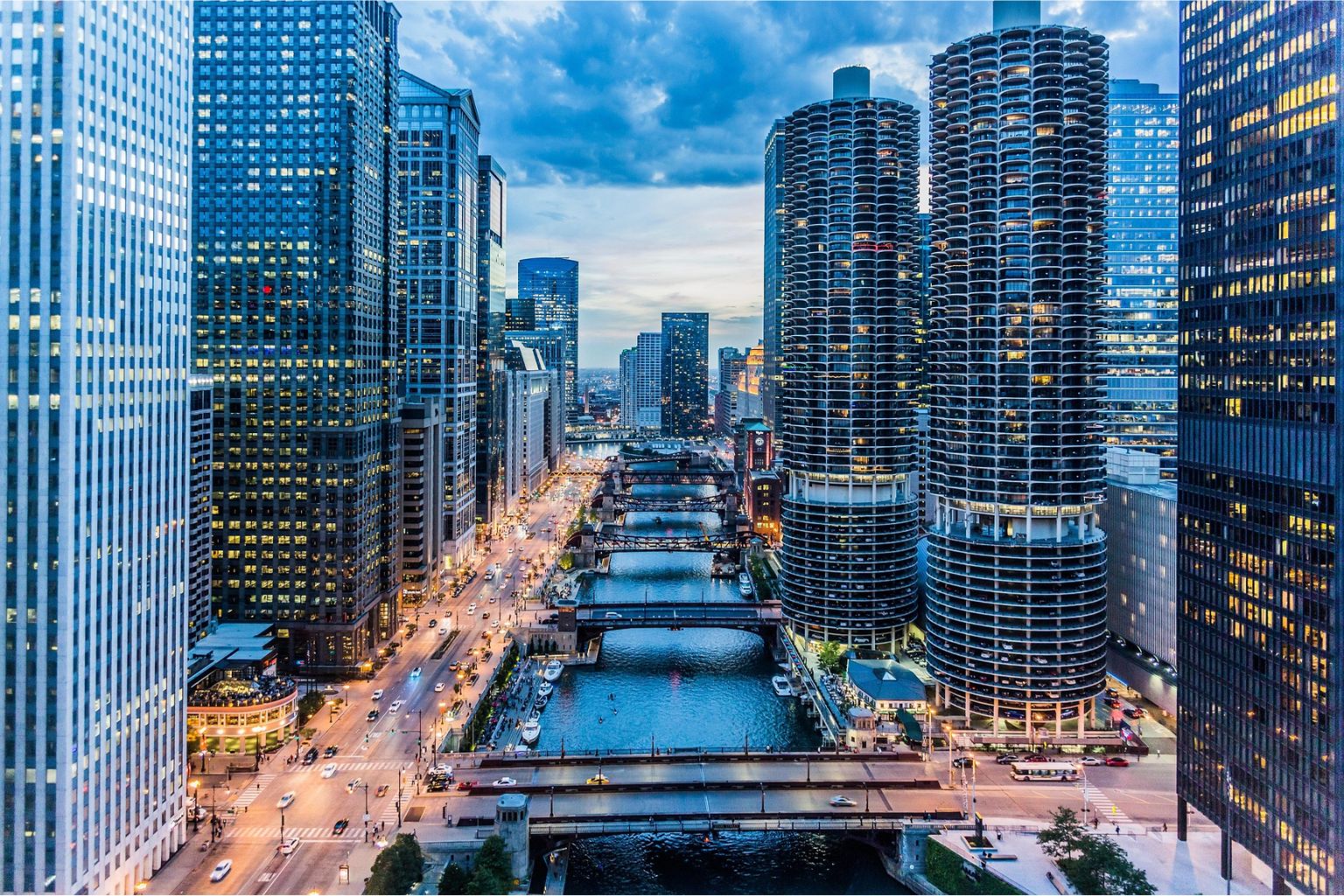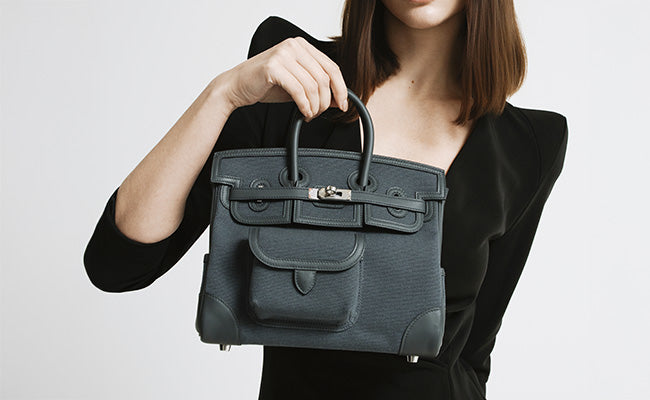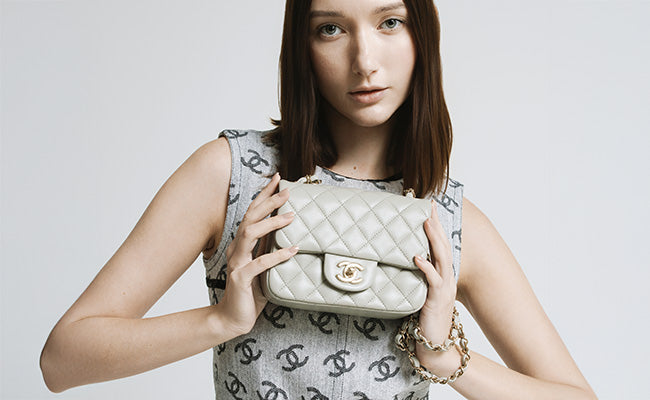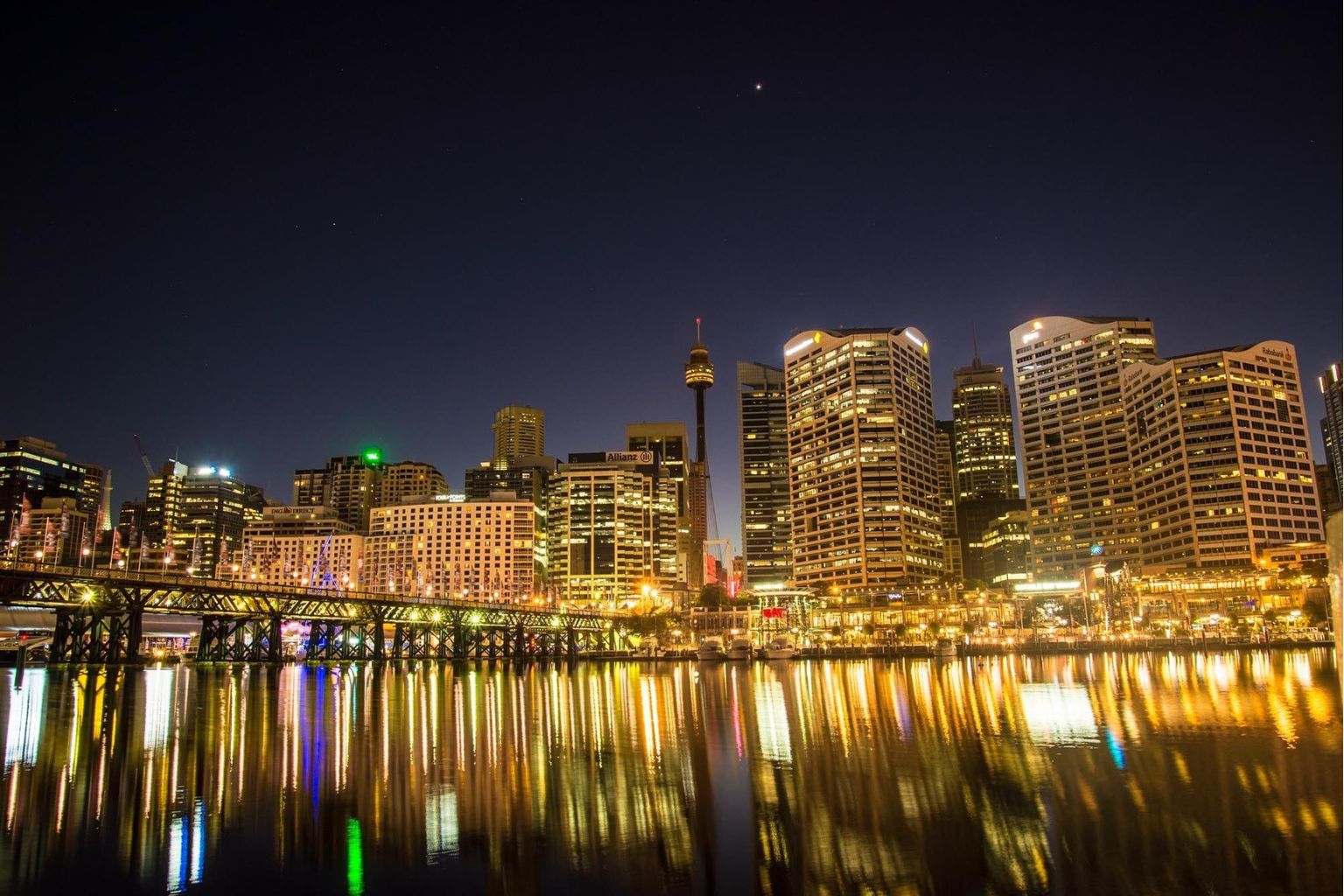
Dress Codes & Bags: Black‑Tie, Business Formal, and Casual Weekends
Check out our Hermès collection and Birkin bags!
Navigating dress codes can feel like deciphering a secret language, especially when you're standing in front of your closet, wondering if your favorite Hermès bag works with that black-tie invitation.
We've all been there, staring at event invites that say "business formal" or "smart casual," second-guessing whether our accessories will hit the mark.
The trick to mastering any dress code? Get a feel for the hierarchy, from casual weekends to white-tie galas, and pick a bag that fits the vibe.
The right handbag can elevate your whole look, while the wrong one might quietly undermine it. It’s wild how much of a difference that detail makes.
Let’s try to break down the world of dress codes and make it a little less intimidating. Whether you’re grabbing a structured Kelly for a big presentation or something slouchy for a lazy Sunday, your bag can be your not-so-secret weapon for nailing the dress code.
Key Takeaways
- Dress codes have a clear order, from casual to white-tie, and each level pairs best with certain bag styles.
- Black-tie and business formal events call for classic, structured bags; casual settings give you more room for fun and color.
- Accessories like bags and shoes can totally make or break your outfit for any dress code.
Defining Dress Codes and Their Hierarchy
Understanding dress codes helps us navigate social and work situations without feeling lost. The spectrum goes from casual weekend wear all the way to super-formal white-tie events, and each has its place in our closets.
What Is a Dress Code?
A dress code is basically a set of guidelines for what’s appropriate to wear in different situations. It’s like a silent language, clothes say a lot about respect, professionalism, or celebration, depending on the moment.
You’ll find these guidelines everywhere. Your favorite Hermès boutique has its standards, but so does the weekend farmers market (though those are wildly different).
Dress codes aren’t just about looking good. They help keep workplaces safe, build credibility in meetings, and set the mood at special events.
Dress codes help us:
- Set expectations for how we show up
- Create a sense of unity in groups
- Show respect for the event and the people there
- Draw lines between what’s professional and what’s not
Once you get the hang of these unwritten rules, you can focus on expressing your personal style, without missing the mark.
The Dress Code Hierarchy
Dress codes run the gamut from super casual to ultra-formal, and knowing where your event falls helps you avoid awkward moments. Here’s a quick breakdown:
Casual to Formal Progression:
| Level | Dress Code | Key Characteristics |
|---|---|---|
| 1 | Casual | Jeans, sneakers, comfy basics |
| 2 | Smart Casual | Dark jeans, blouses, polished but relaxed |
| 3 | Business Casual | Dress pants, button-downs, professional feel |
| 4 | Business Formal | Full suits, ties, classic corporate |
| 5 | Cocktail | Party dresses, dark suits, celebratory |
| 6 | Black-Tie | Tuxedos, evening gowns, formal |
| 7 | White-Tie | Tailcoats, floor-length gowns, most formal |
With this in mind, you won’t accidentally show up in flip-flops to a business dinner or a ballgown to brunch. And if you’re unsure, erring on the side of formality is usually safer.
Importance of Dressing Appropriately
Dressing for the occasion isn’t about mindless rule-following, it’s about reading the room and showing you care. When you get it right, you fit in and feel good about it. Whether you’re carrying your beloved Birkin into a meeting or picking the perfect clutch for an evening out, dressing appropriately boosts your confidence.
Why it matters:
- Sets a strong first impression
- Builds credibility at work
- Shows you get the social cues
- Cuts down on that “do I fit in?” anxiety
Let’s be honest, no one wants to be the person in flip-flops at a memorial or in evening wear at a coffee shop. The goal isn’t to be perfect, just thoughtful. It’s about showing you considered the context.
Black-Tie and White-Tie Essentials
Formal dress codes are all about precision and details. Whether you’re headed to a charity gala or an exclusive event, knowing the difference between black tie, white tie, and their offshoots helps you show up right.
Black Tie Dress Code: What to Wear
Black tie is elegant and formal, but not quite as intense as white tie. For men, it’s a tuxedo and a bow tie, no workarounds here.
A classic tux means a dinner jacket with satin lapels, matching trousers with a satin stripe, and a crisp white shirt. The bow tie should be black silk, and yes, tying it by hand is the way to go.
Shoes should be black patent leather or shined black oxfords. Add a cummerbund or low-cut waistcoat (pleats facing up, always).
For women, black tie means a formal evening gown or a really polished cocktail dress. Floor-length is the gold standard, but a knee-length dress can work for less formal black-tie events.
Stick to luxe fabrics, silk, velvet, or quality crepe. Daytime colors and casual materials don’t belong here. Long gloves? Totally classic, especially with a strapless dress.
White Tie Dress Code: The Ultimate Formality
White tie is the top tier, reserved for the fanciest occasions. Men wear a black tailcoat with matching trousers, a white bow tie, and a white waistcoat.
The tailcoat should have peak lapels in silk. Shirts need detachable wing collars and French cuffs, plus white studs and cufflinks. Finish with patent leather court shoes.
There’s zero wiggle room here, white tie follows strict traditions.
Women wear floor-length evening gowns, no exceptions. Gowns should be elegant and understated, not flashy.
Long gloves (past the elbow) are traditional, though not mandatory these days. Jewelry should be classic and refined, think heirlooms, not trends.
Creative Black Tie and Black Tie Optional
Black-tie optional gives you a little breathing room but still expects formality. Men can pick a tux or a dark suit with a conservative tie.
Creative black tie lets you add personal flair within formal limits. Try a velvet dinner jacket, a colored bow tie, or unique cufflinks, just don’t go overboard.
Women get more flexibility here. Sophisticated separates, dressy jumpsuits, or non-traditional gown colors all work for creative black tie.
These relaxed versions are great for modern events where the host wants elegance but not rigidity. You’ll see these at weddings a lot.
Accessories and Footwear for Formal Events
For men, patent leather is the go-to for formal shoes. Oxford or opera pump styles are best, always black for tradition’s sake.
Add a pocket watch, white pocket square, or quality cufflinks for an extra touch. Avoid anything too trendy that might look dated in photos.
Women should choose footwear that matches the gown’s formality. Heeled sandals, pumps, or elegant flats all work, depending on the dress and event.
Evening bags should be small and refined, clutches or tiny chain bags in metallics, black, or a coordinating color. Quality over flash wins every time.
Business Formal Attire
Business formal is as polished as it gets for the office, think tailored suits, crisp shirts, and shiny shoes. Knowing the difference between business formal and business professional can save you from awkward missteps, especially when you’re picking out accessories.
Business Formal vs. Business Professional
People mix up these terms a lot, but they’re not quite the same. Business formal is the most conservative, think courtrooms, C-suite meetings, or big corporate events.
Business professional is a notch more relaxed. You still need a suit, but you might get away with lighter colors or a subtle pattern.
Quick comparison:
| Business Formal | Business Professional |
|---|---|
| Only dark suits (navy, charcoal, black) | Medium-toned suits are okay |
| White or light blue shirts | More shirt color options |
| Conservative ties required | Slightly more tie freedom |
| Classic leather dress shoes | Same shoes, a bit more flexible |
Business formal doesn’t leave much room for self-expression. Timeless and sophisticated is the goal.
Fundamentals of a Business Suit
A great suit is the backbone of business formal. Go for quality wool that holds its shape all day.
Make sure it fits well, shoulders and chest matter most. The blazer should hit just below your hip, and sleeves should show a sliver of shirt cuff.
Suit checklist:
- Jacket: Single or double-breasted, classic cut
- Dress pants: Flat-front or pleated, break just at the shoe
- Vest: Optional, but adds formality
Button-downs are fine for business professional, but French cuff shirts with cufflinks step things up for formal days. Stick with crisp white or pale blue.
Tailoring is everything. Even an average suit looks expensive if it fits right.
Accessories and Appropriate Shoes
Finish with leather dress shoes, black or dark brown. Oxfords and cap-toes are the safest choices.
Match your belt to your shoes. Black with black, brown with brown. It’s the same attention to detail you’d use picking a Hermès bag for a night out.
Must-have accessories:
- Silk ties in solid or subtle patterns
- Dress socks that work with your suit (not your shoes)
- A classic wristwatch (skip the sporty ones)
- Leather portfolio or briefcase
- Minimal cufflinks for French cuffs
Good socks matter, no one wants to flash bare leg at a meeting. Pick colors that go with your suit.
Keep jewelry simple: wedding rings, subtle cufflinks, a refined watch. Save the bold stuff for the weekend.
Business Casual and Smart Casual Styles
These codes are the happy medium, polished enough for work, comfortable enough for real life. Business casual is about looking put-together with tailored separates, while smart casual lets you show a bit more personality.
Business Casual Dress Code Essentials
Business casual is everywhere now, offices where suits feel too stiff, but jeans are a no-go.
Chinos and khakis are the workhorses here. They’re structured but not as formal as dress pants. Navy, charcoal, and classic khaki are safe bets.
Button-down shirts are still essential. Go for crisp cotton in white, light blue, or maybe a subtle pattern. Long sleeves usually look more professional.
Key pieces:
- Blazers or sport coats for extra polish
- Leather loafers or dress shoes
- Knit sweaters for layering
- Belts that match your shoes
Business casual is about intention. Everything should fit and look cared for. Leave the athleisure and flip-flops at home.
Smart Casual: Polished Yet Relaxed
Smart casual is a lifesaver for dinner dates, weekend plans, or creative offices.
It’s more flexible than business wear. Dark jeans with a crisp shirt and a blazer? Perfect smart casual. The trick is elevated basics, not formal pieces.
Essentials:
- Quality dark denim
- Polo shirts or casual button-downs
- Casual blazers in textured fabrics
- Clean sneakers or casual leather shoes
- Knitwear like cardigans or sweaters
Accessories make a big difference. A good watch or leather bag can pull it all together. Mixing textures, like wool and cotton keeps things interesting.
Smart casual adapts to your plans. Dress it up with a blazer, or roll up your sleeves if things get more relaxed.
Creative and Dressy Casual Variations
Dressy casual pushes the boundaries, think art openings, casual Fridays, or upscale weekend hangs.
You can have fun here: try statement pieces you’d never wear to a boardroom, like patterned shirts or bold trousers.
Best bets:
- Textured trousers (corduroy, linen)
- Henley shirts or casual knits
- Interesting shoes, desert boots or minimal sneakers
- Statement accessories that show off your style
The creative part is all about thoughtful trends. Maybe it’s a vintage shirt or a modern cut. Just pick one standout item per outfit, it’s easy to go overboard.
“Dressy” still means put-together. Even your casual pieces should look intentional, not random. The goal? Effortless, not careless.
Mastering Casual and Weekend Dressing
Casual weekends are all about finding that sweet spot between comfort and style. Well-chosen basics, think quality denim, good tees, and a few standout pieces - can make you look put-together without trying too hard. It’s mostly about understanding fit, picking fabrics that feel great, and knowing when to take things up a notch beyond just t-shirts and sneakers.
Casual Wear Basics for Men and Women
Great casual wear starts with quality basics that you’ll actually want to wear. These are the pieces you reach for on autopilot because they just work.
For men, the essentials:
- Dark wash jeans or solid chinos that fit right
- Soft cotton t-shirts and henleys
- Casual button-downs in linen or cotton
- Sneakers or loafers that don’t look tired
- A sweater or hoodie for layering
Women’s casual staples focus on versatility:
- Good denim in cuts you like (straight, skinny, wide, whatever works)
- Cotton or modal tees and tanks
- Jersey or cotton-blend dresses for easy days
- Flats, sneakers, or ankle boots you can actually walk in
- Cardigans or light jackets for unpredictable weather
Honestly, fit is everything. A $50 tee that fits like a glove always beats a pricier one that’s awkward.
Jeans, T-Shirts, and Sneakers: Do's and Don'ts
Let’s be honest, these basics can totally make or break your weekend getup.
Jeans Do's:
- Go for dark washes if you want to look a bit sharper
- Make sure the length is right (no bunching up at the ankles)
- Buy denim that holds its shape
- Think about the setting (maybe skip the ripped jeans for brunch with the in-laws)
Jeans Don'ts:
- Steer clear of fits that are way too baggy or painted-on tight
- Save the super-distressed styles for truly casual days
- Don’t wear jeans that drag or look cropped unless that’s your thing
T-Shirt Guidelines:
- Stick to natural fibers, cotton and blends are just comfier
- Pick colors that actually flatter you
- Shoulder seams should hit where your shoulders actually are
- Maybe leave the loud graphic tees for lounging at home
Sneaker Standards: Seriously, keep sneakers clean. White leather sneakers go with almost anything, while canvas works for more laid-back stuff.
Elevated Casual: Sundresses, Midi Skirts, and More
Some weekends need a little more effort than just jeans. That’s where elevated casual comes in.
Casual dresses are lifesavers. Midi shirt dresses in cotton or linen? Perfect for brunch or hitting a gallery. Jersey wraps are comfy but still look polished. Stick to solids or subtle prints for flexibility.
Midi skirts paired with a basic tee or blouse can look effortlessly cool. A-lines in cotton or ponte work well, and denim midis are having a moment.
Some favorite combos:
- Linen trousers with a silk cami
- Tailored shorts and a crisp white shirt
- Knit midi dresses under a denim jacket
- Wide-leg pants with a fitted tank
You want to look like you didn’t try too hard, but you definitely thought about it. That “I woke up like this” vibe? It’s all in the fabric and tailoring.
Dress Code Accessories: Bags and Footwear
Accessories can completely change an outfit, bags and shoes especially. They show you care about details and get the little things right.
Luxury Bags: The Finishing Touch
Black-tie events are all about restraint. Small clutches or evening bags that don’t overpower your dress work best.
Silk, satin, or beaded clutches are classics. Chain straps are practical but still look elegant. Metallic tones, gold, silver, rose gold, pair with most jewelry.
Business formal means structured bags that say you mean business. Leather totes, satchels, or top-handles in black, navy, or cognac are always safe bets. Minimal hardware keeps things professional.
Weekend casual? Time to have fun. Crossbody, bucket, or slouchy hobo bags work. Canvas and suede are fair game. Don’t be afraid of color or pattern, as long as it’s not too wild.
Size depends on the situation. Evening bags just need to fit your essentials. Business bags should handle a laptop and paperwork. Weekend bags? Go for something that fits your vibe and your stuff.
Footwear for Every Dress Code: From Heels to Loafers
Heels are still the go-to for formal events. For black-tie, dress shoes in satin, velvet, or patent leather pair nicely with gowns.
Stilettos and pumps are always safe, but strappy sandals work if your feet are ready for the spotlight. Three to four inches is usually the sweet spot for height.
Business formal shoes mean classic pumps, pointed flats, or low-block heels in leather. Stick to black, brown, or navy.
Ankle boots are a solid choice for business casual, sleek leather or suede works with both pants and skirts.
Loafers are perfect for casual Fridays or professional weekends. Leather looks sharper than canvas, and penny loafers or driving shoes are timeless.
Weekends open up the options. Sneakers, espadrilles, or casual boots all work depending on the plans.
How to Pair Bags and Shoes
Matching? Not required. Coordination looks better, think colors that work together instead of exact matches, which can look a bit forced.
Mixing textures makes things interesting. Smooth leather bags with suede shoes, or patent with matte, just works. Don’t go overboard on textures, though.
Metal hardware should match up (gold with gold, silver with silver), unless you’re intentionally mixing for effect.
Proportions matter, big bags need substantial shoes, like boots or chunky heels. Delicate clutches look best with refined pumps or sandals.
Seasons change things up, summer is for lighter colors and fabrics, winter is for deeper tones and richer textures like velvet or brocade.
Seasonal and Festive Attire Variations
Holiday parties and celebrations need a bit more sparkle. These events are the perfect excuse to play with dress codes and add some festive flair.
Cocktail Attire and Semi-Formal Options
Cocktail attire is that middle ground, fancy but not stuffy. You’ll see it at office holiday parties, gallery openings, and nice dinners.
A cocktail dress in a rich color (burgundy, emerald) is a classic move. Guys usually go for dark suits and maybe a fun pocket square.
Semi-formal is a little more relaxed than black-tie but still sharp. Think nice separates, tailored blazers, and accessories that don’t scream for attention.
Occasion Bag Choice Key Features
| Occasion | Bag Choice | Key Features |
|---|---|---|
| Cocktail parties | Small clutch or evening bag | Chain strap, metallic accents |
| Semi-formal dinners | Structured mini bag | Leather finish, compact size |
| Gallery events | Crossbody or small tote | Hands-free option, elegant hardware |
During the holidays, it’s fun to bring in textures like metallics or jewel tones. A Hermès Kelly or Birkin in a deep green or brown? Always a win.
Pick bags that don’t steal the show but still get the job done for the evening.
Wedding Attire and Festive Dressing
Wedding attire can be all over the place depending on season and venue. Winter weddings usually mean richer fabrics and deeper colors, while spring is all about lighter tones.
Festive dressing isn’t just for holidays, think galas, milestone birthdays, big celebrations. It’s a chance to go bold with accessories but still keep it classy.
Daytime weddings call for structured neutral bags. Nighttime? Break out the beaded clutches or metallics.
Festive attire tips:
- Play with textures like velvet or silk
- Go for bags with special touches, chain straps, cool hardware
- Match your bag size and style to the venue
- Don’t wear anything that could outshine the bride’s color scheme
Investing in a few versatile pieces pays off big time during wedding season. A navy or black clutch works for almost anything, while a fun metallic bag instantly upgrades your look.
Wedding guest outfits should always support the event’s vibe, not compete with it.
Frequently Asked Questions
Here’s where we get into the details, dress code quirks, luxury bag etiquette, and those little things that make you look polished without seeming like you tried too hard.
What's the real deal with black-tie attire, can you ever forego the bow tie for a long tie?
Black-tie means bow tie, period. The classic black bow tie with a tux is just the standard, and it’s been that way forever.
Some events are less strict and might let you get away with a long tie, but technically, it’s not black-tie. If you’re not sure, ask the host. Most expect the bow tie, and showing up in a long tie can look like you missed the memo.
Is a Birkin truly the ultimate arm candy at a gala, or should one consider other Hermès options?
The Birkin is gorgeous, but honestly, it can feel a little much for evening events. It’s more practical for daytime when you need space and want to show off some luxury.
For galas, I’d lean toward the Kelly Pochette or a sleek Constance. They’ve got that Hermès cachet but with a more refined vibe for evening wear.
The Kelly in Sellier leather is also a great pick for formal nights. Its structure pairs well with evening gowns and doesn’t try to steal the spotlight.
Could you clue us in on business formal must-haves that won't go unnoticed in the boardroom?
A sharp blazer in navy or charcoal is where it starts. Quality always beats chasing the latest trend, so get pieces that fit you right.
The bag matters, too. A structured tote, like a Hermès Birkin 35 or Kelly 32, says you mean business but still care about style.
Finish with crisp shirts, good leather shoes, and just a touch of jewelry. Subtle luxury always wins over flashy.
In the realm of luxury, what's the difference between 'smart casual' and 'I just threw this on' for weekend jaunts?
Smart casual is intentional, you picked those cashmere sweaters, tailored pants, and nice leather accessories for a reason.
The “just threw this on” look usually lacks that polish. Smart casual keeps a strong base, think quality knits and tailored pieces, but isn’t afraid to throw in something relaxed.
Your bag says a lot here, too. A Hermès Garden Party or Evelyne nails that balance between chill and luxe.
How do you balance comfort with outright fashion panache when dressing down on casual weekends?
Start with fabrics that feel good, cashmere, soft cotton, leather that actually breaks in. Comfort doesn’t mean sloppy.
Fit is still key. Well-cut joggers or jeans look a thousand times better than anything baggy, no matter the price.
Accessories make everything better. A pretty scarf, nice sneakers, or a casual Hermès piece can take a basic outfit up a notch.
What are some tongue-in-cheek, yet tasteful accessories to jazz up a business formal look without breaking the code?
A subtle pocket square with a quiet pattern can add a bit of personality, think small geometrics or a classic paisley, but nothing too wild. You want a hint of fun, not a distraction.
Cufflinks are another spot for some flair. Go for classic metals or stones that play well with your watch, not something that'll start a competition on your wrist.
When it comes to bags, why not try an unexpected color in a timeless shape? A navy or burgundy Hermès bag, for example, keeps things professional but shows you know your way around a color wheel. Black's fine, but isn't it a little safe?



